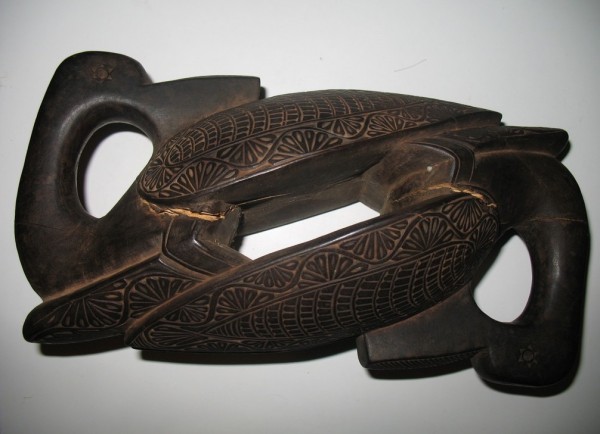“In the last few years, small figures (from India) carved in wood cropped up now and again, usually representing worshipping women, but also female water bearers, mothers, or pregnant women. These pieces are made in the simple traditional manner so as to be affordable for the lower-income strata of the population. And it is precisely the implied simplicity that makes these figures attractive” (Fosshag, 2003, P. 132).
Schmejkal describes the small mother-child statues in the following way: “Carved mother-child-figures with one mother and one to four children were important sculptures in the Indish households. … The contemplation and the dealing with these statues should primarily promote the natural finding of the mother-child-relationship. Signs of usage indicate that they served as childrens’ toys. Similar to the doll in Western countries, children could (in this way) be brought up — in a playful and vivid way — to the mother-child-role. Especially in girls, a wish for children should emerge from this usage. … Nowadays, the collector is rarely granted the privilege to find wooden mother-child-statues in India because, in the worst case, they were used as fuel for heating” (Schmejkal, 2010, p. 188).
Fosshag (2003), on the other hand, argues that these statues did not serve as toys but were “used for devotional purposes within the home, placed there as votive offerings” (p. 139).
Literature
Fosshag, B. (2003). Unknown figurines from India: Votive offerings for the goddess Mauli/Mariai. Art Tribal 04, Winter 2003, pp. 132-147.
Schmejkal, H. (2010). Indien. Volks- und Stammeskunst. Selbstverlag (IBSN 978-3-00-032437-6).


